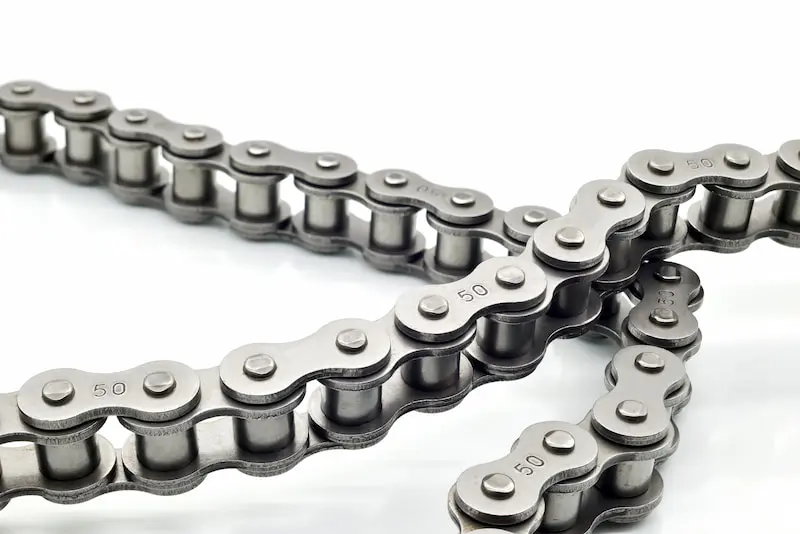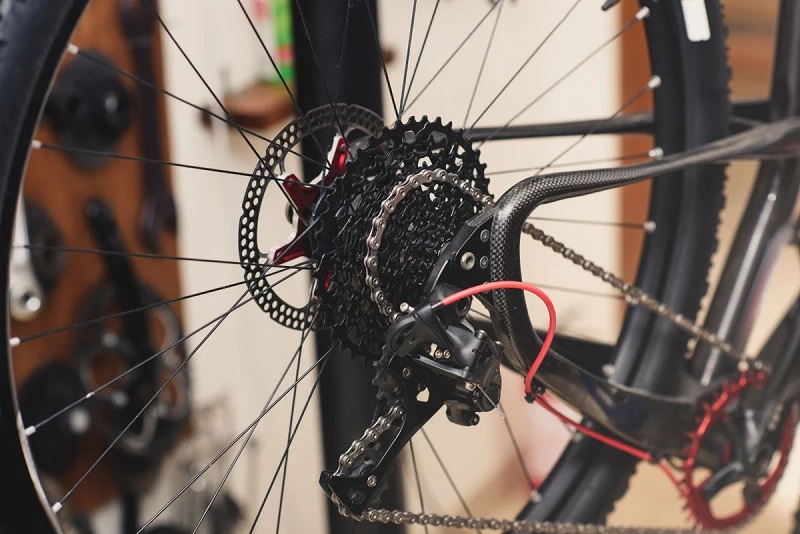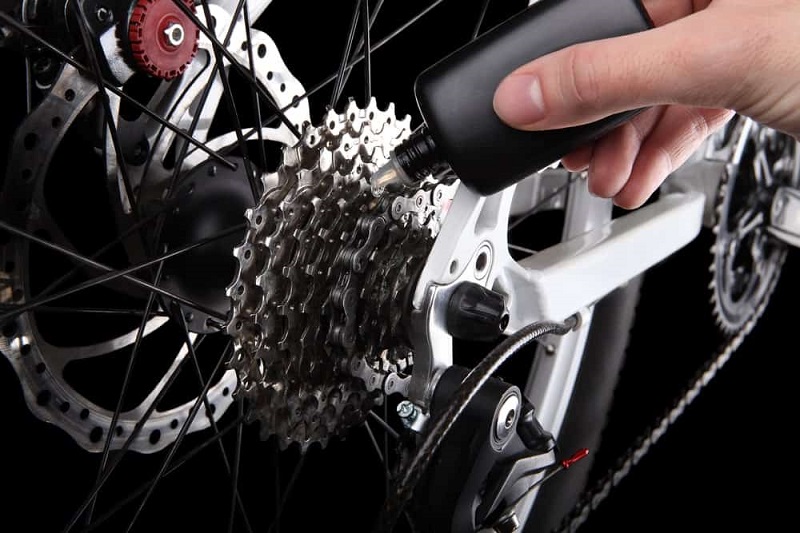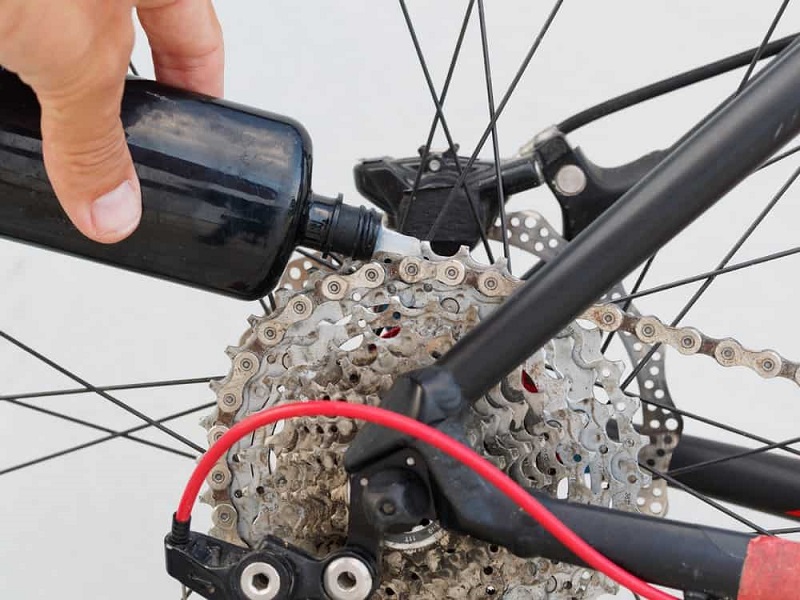Parts
Types of Bicycle Chains – A Beginners Guide
Bicycle chains are more than just metal links looping together. They are a pivotal component that transforms your pedaling effort into motion, propelling you forward. Understanding the different Types of bicycle chains can optimize your cycling experience, whether you’re a casual rider or a hardcore cycling enthusiast. Let’s delve HookBike deeper into the various types available and how they cater to different cycling needs.
History and Evolution of the Bicycle Chain
The bicycle chain has a rich history that closely follows the development and evolution of the bicycle itself. Its story is one of adaptation, innovation, and improvements to meet the changing demands of riders and evolving bike designs. Here’s a brief overview of the history and evolution of the bicycle chain:
Early Bicycles: No Chains
Bone-shakers and Penny-farthings: The earliest bicycles didn’t use chains. The “bone-shaker” bicycles of the mid-1800s had pedals attached directly to the front wheel. Following the bone-shaker era, the penny-farthing or “ordinary” bicycle was introduced, which also didn’t use a chain. The larger the front wheel, the further the bicycle would travel with each pedal stroke, so wheels became very large to increase speed.
Introduction of the Chain Drive
Safety Bicycles: By the 1880s, the “safety bicycle” was developed, primarily as a safer alternative to the penny-farthing. The design resembled modern bicycles, with equally sized wheels and a chain-driven rear wheel. This was a transformative design as it allowed for efficient energy transfer from the pedals to the rear wheel, without needing a gigantic front wheel.

Materials and Design
The earliest chains were made of steel, but as the demand for lighter and stronger materials grew, manufacturers began to experiment with alloys and advanced manufacturing techniques. The diamond-shaped design, which is still in use today, was found to be the most effective at transmitting power.
Derailleurs and Multi-speed Bicycles
With the advent of multi-speed bicycles in the early 20th century, the chain’s design had to adapt. Derailleur systems, which allowed riders to change gears and thus the difficulty of pedaling, required chains to be able to shift between different-sized sprockets. This necessitated the development of flexible and reliable chains that could handle these shifts.
Continuous Innovations
Over the decades, chains have continued to evolve:
- Widths: Chains have become narrower over time to accommodate more sprockets on the rear cassette, allowing for more gear options.
- Materials: Advancements in metallurgy have led to chains that are both lighter and stronger. Some high-end chains also feature coatings to reduce friction and increase lifespan.
- Quick Links: Modern chains often include a “quick link” or “master link” that makes it easier to break and reconnect the chain without special tools.
- Anti-rust and Low-friction Technologies: Chains today are also designed with materials or coatings that resist corrosion and reduce friction, leading to improved efficiency and lifespan.
Alternatives to Traditional Chains
While the traditional chain remains dominant, there have been some innovations and alternatives:
- Belt Drives: Some modern bicycles, especially those meant for urban commuting, use a rubber belt instead of a chain. Belts are quieter, don’t rust, and require less maintenance than chains.
- Shaft Drives: A less common alternative to chains is the shaft drive, where a shaft replaces the chain to transmit power from the pedals to the wheel. It’s a cleaner and low-maintenance option, though typically heavier and less efficient than a chain.
Throughout its history, the bicycle chain has adapted to the needs of riders and advancements in bicycle design. As cycling technology continues to progress, it’s likely that the chain will continue to evolve alongside it.
See more: How To Get Bike Grease Out Of Clothes

Types of Bicycle Chains are popular today
There are various types of bicycle chains, primarily distinguished by their application and width. The type of chain you need typically depends on the kind of bicycle you have and its intended use. Here are the main types of bicycle chains popular today.
Standard Derailleur Chains
One of the most common types of bicycle chains you’ll come across is the derailleur chain. Designed for bicycles with multiple sprockets at the rear, they:
- Are slimmer and lighter in design.
- Feature external shifting where the chain moves from one sprocket to another.
- Allow for precise gear shifts, catering to terrain and speed adjustments.
Single-Speed Chains
Single-speed chains are characterized by:
- A robust and straightforward design.
- Usage on bikes with just one front and one rear sprocket.
- Being slightly wider than derailleur chains, ensuring durability and less frequent replacements.
- They are particularly popular among urban cyclists and those who prefer a minimalist cycling experience.
Internal Hub Chains
Bicycles with hub gears, often found on city bikes, utilize this type of chain. Here’s what sets them apart:
- These chains cater to bikes with multiple gears housed within the hub.
- Require less frequent maintenance due to the enclosed gearing system.
- They offer a clean, streamlined look, reducing the chance of your clothing getting caught.
BMX Chains
BMX bikes, known for their stunts and tricks, require a specialized chain. These chains:
- Are broader and more robust to withstand the rigorous actions.
- Have larger and more extended links.
- Often come in half-link designs, allowing for minute adjustments in length for precise tensioning.
Mountain Bike Chains
Mountain biking demands a sturdy chain to handle the rough terrains and abrupt gear shifts. These chains:
- Are designed to endure muddy, rocky, and steep environments.
- Offer swift and smooth gear transitions.
- Are corrosion-resistant, given the varied conditions they’re exposed to.
Chains for Electric Bikes
With the rising popularity of e-bikes, there’s a need for chains tailored to them. These are:
- More durable to handle the additional torque from electric motors.
- Often reinforced with materials like titanium.
- Designed to last longer under the e-bike’s continuous power supply.
In addition to the above classifications, various brands have proprietary designs and technologies that they claim offer advantages in terms of strength, shifting performance, longevity, and resistance to dirt and corrosion. Some popular brands in the bicycle chain market include Shimano, SRAM, KMC, Campagnolo, and Wippermann Connex, among others.
When choosing a chain, it’s essential to ensure compatibility with your bike’s drivetrain to guarantee optimal performance and longevity.

Chain Maintenance and Replacement
Maintaining and occasionally replacing your bicycle chain is crucial for ensuring smooth shifting, prolonging the life of other drivetrain components, and providing efficient power transfer. Here are some steps and guidelines for chain maintenance and replacement:
Chain Maintenance
Regular Cleaning
- Use a chain cleaning device filled with degreaser or a brush to scrub the chain.
- Alternatively, remove the chain and soak it in a degreasing solution.
- After cleaning, rinse the chain with water and allow it to dry.
Lubrication
- Once dry, apply a bicycle-specific lubricant evenly to the chain. The type of lube (wet or dry) depends on your riding conditions.
- Rotate the pedals backward several times to allow the lubricant to penetrate the chain links.
- Wipe off excess lubricant with a rag to prevent the attraction of dirt and grime.
Inspection
- Regularly check the chain for wear, stiff links, or rust.
- Make sure the chain runs smoothly through the drivetrain.
See more: How To Clean And Lube A Bicycle Chain

Chain Replacement
Measuring Chain Wear
- Use a chain wear indicator tool or a ruler.
- For the ruler method: Align the zero-inch mark with a chain pin, and at the 12-inch mark, another pin should align closely if the chain is in good condition. If the pin is more than 1/16″ past the 12-inch mark, consider replacing the chain.
Replacing the Chain
- If using a chain with a master link or quick link, locate this link. Using master link pliers or a similar tool, unlink the chain.
- If the chain uses a connecting pin, use a chain breaker tool to push out one of the chain pins.
- To install a new chain, thread it through the derailleurs and around the chainrings and cassette. Connect the ends either with a new connecting pin or a master/quick link, depending on the chain type.
- Ensure the chain is the correct length. A chain that’s too long or too short can cause shifting problems or drivetrain wear. You might need to remove or add links to get the correct length.
Compatibility
- Make sure your new chain is compatible with your bicycle’s number of gears. A 10-speed bike requires a 10-speed chain, for instance.
Cassette Examination
- When replacing a very worn chain, inspect the cassette (rear gears). Worn out cogs might not mesh well with a new chain, leading to skipping or poor shifting. If the cassette is significantly worn, consider replacing it.

Tips
- Regular maintenance can prolong the life of your chain and other drivetrain components.
- A well-maintained chain ensures efficient power transfer and smoother shifting.
- Riding conditions impact the frequency of maintenance. For instance, muddy or wet conditions may require more frequent cleaning and lubrication than dry conditions.
- Always use bicycle-specific products for cleaning and lubrication. Some household products can degrade the chain’s material or attract dirt.
A chain is a wear item on a bicycle. With time and use, it will stretch and wear out, so periodic replacement is necessary to maintain optimal bicycle performance.
Conclusion: Choosing the Right Chain for Your Needs
The right bicycle chain can significantly enhance your cycling experience. With various types available, each catering to specific cycling forms and requirements, it’s essential to choose one that aligns with your needs. Whether you’re navigating city streets, performing BMX tricks, exploring mountain trails, or enjoying the convenience of an e-bike, there’s a perfect chain out there for you. By understanding the nuances of each type, you can ensure optimal performance, longevity, and most importantly, an enjoyable ride every time.

